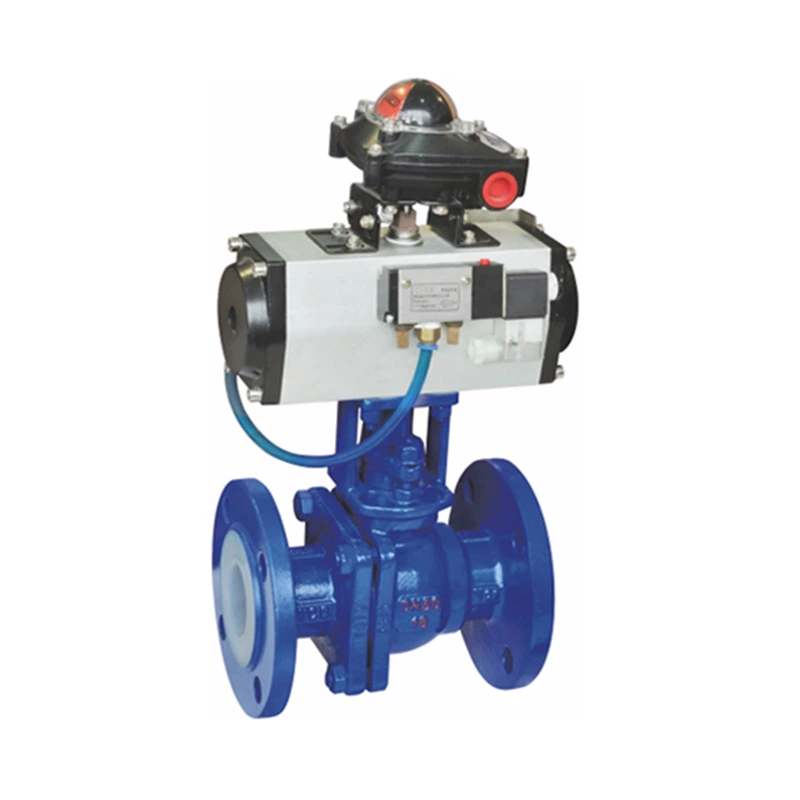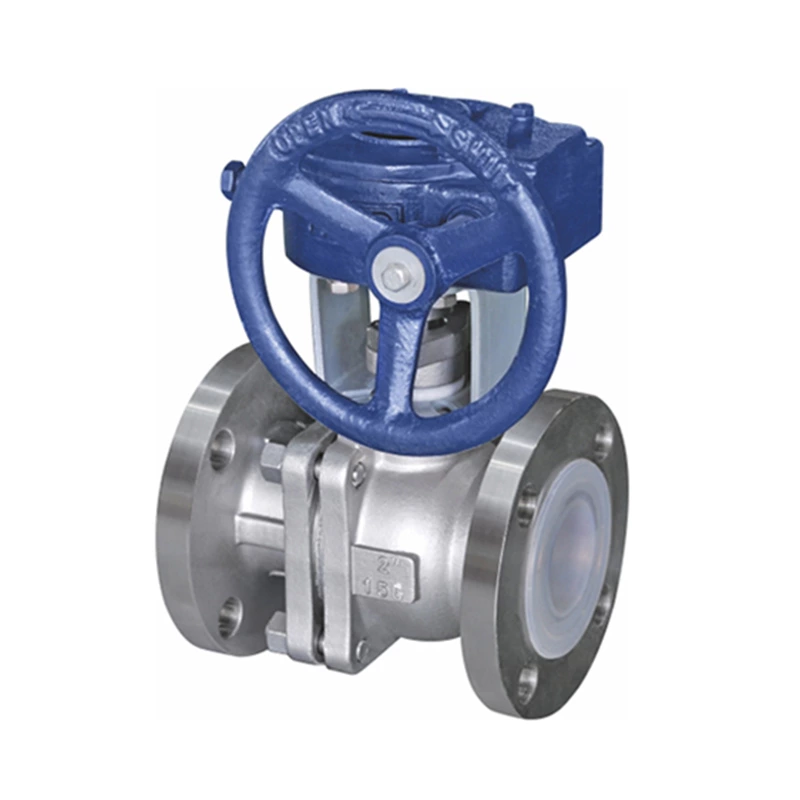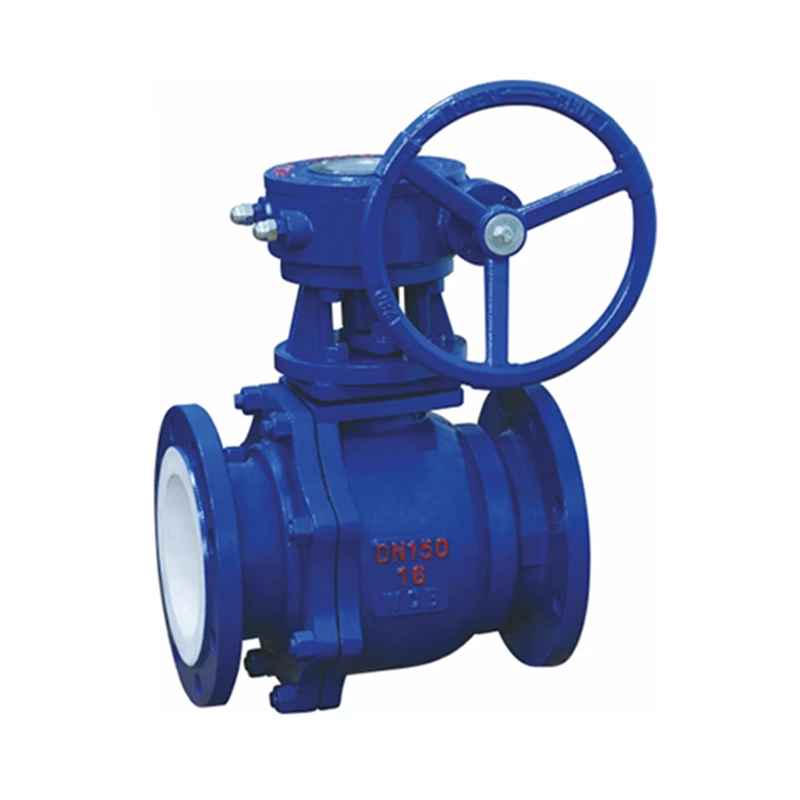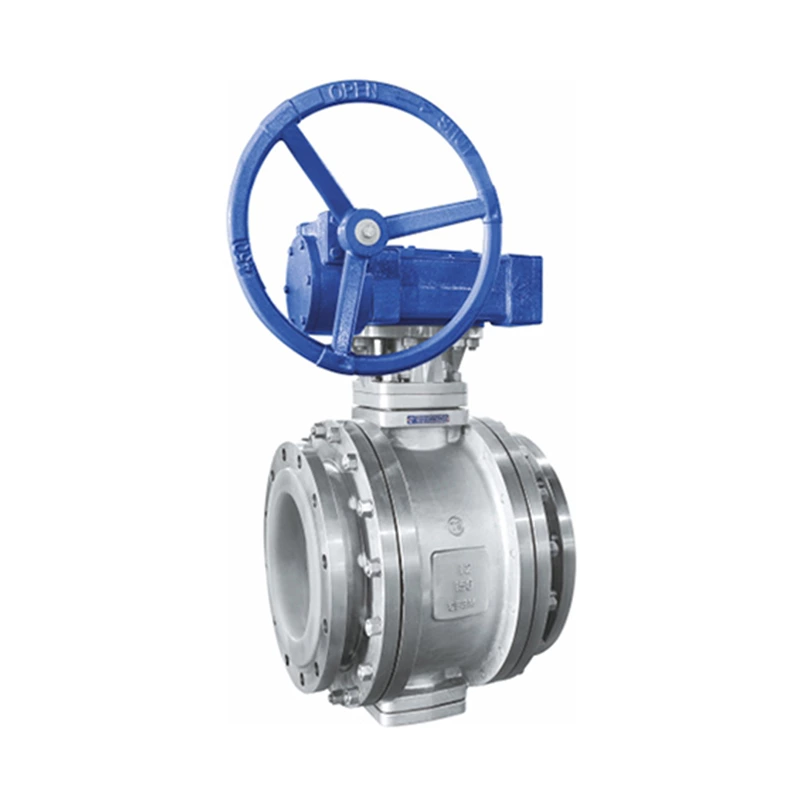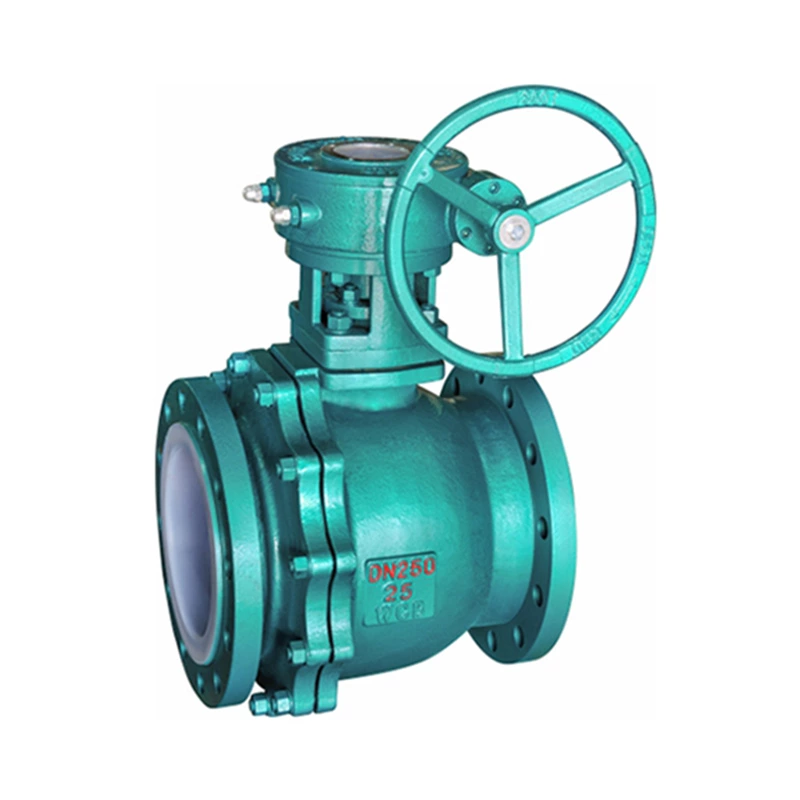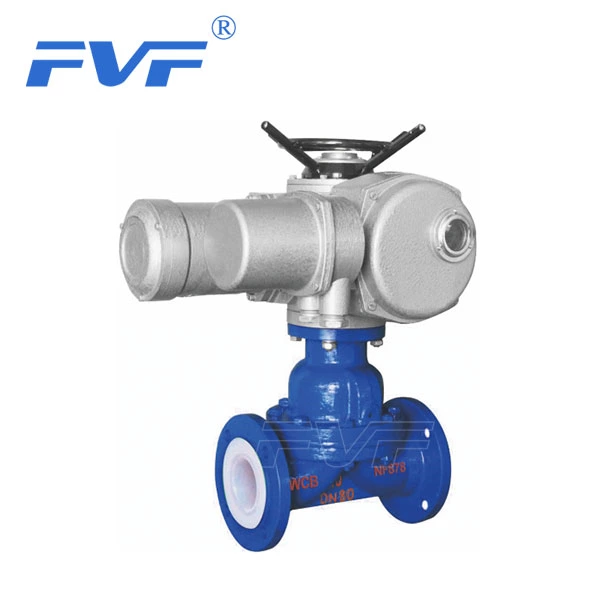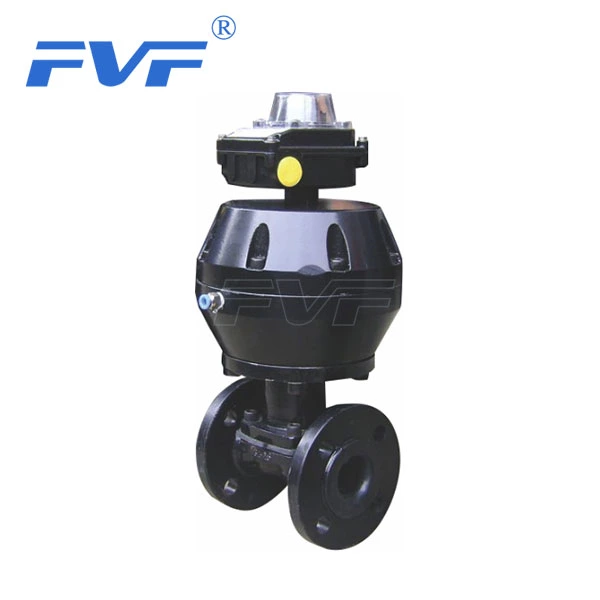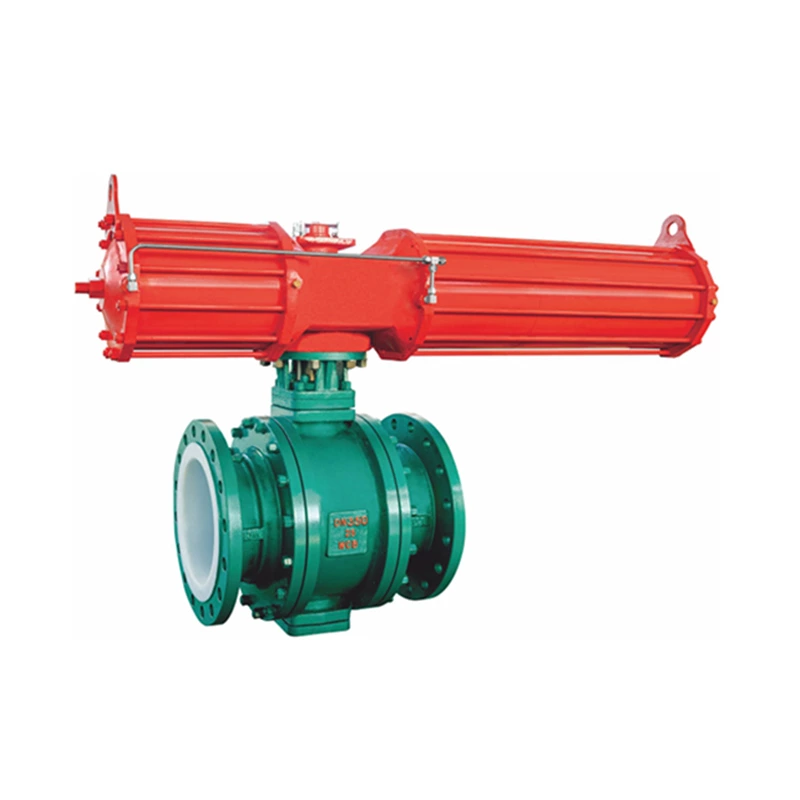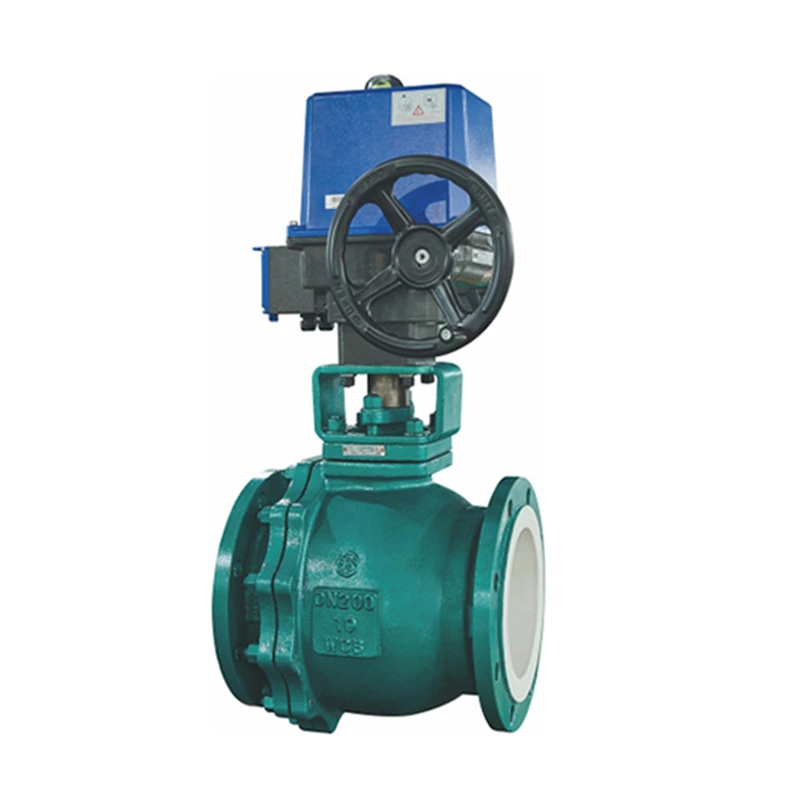Brief Discussion On Technical Conditions And Tests Of Cryogenic Valves
In order to ensure that Lined Valve can operate safely and reliably at low temperatures, there are some special considerations and requirements in the design and manufacture of cryogenic valves. Similarly, the test of cryogenic valves is different from that of ordinary valves. The following is a brief introduction to the test methods, test requirements and test equipment of JB/T7749-1995 "Technical Conditions for Cryogenic Valves" and British BS6364: R1998 "Cryogenic Valves".
1. Cryogenic Valve Test (JB/T7749-1995)
(1) Test Conditions
The cryogenic test of cryogenic valves is carried out after the normal temperature test is passed.
Before the test, moisture and grease should be removed from the valve, and the bolts should be tightened to the predetermined torque or tension, and the value should be recorded. A thermocouple that meets the test requirements is connected to the valve, and the temperature of the valve body and valve cover is measured during the test. The cooling medium for the cryogenic test is a mixture of liquid nitrogen and alcohol or liquid nitrogen, and the test medium is helium.
(2) Test Steps
1) See Figure 2-46 for the cryogenic valve test device. As shown in the figure, install the valve in the test container and connect all joints to ensure that the valve packing is at the top of the container and the temperature is kept above 0 degrees.
2) At room temperature and maximum valve test pressure, use nitrogen to perform initial inspection test to ensure that the valve is tested under appropriate conditions.
3) Immerse the valve in a mixture of liquid nitrogen and alcohol or liquid nitrogen to cool it to the low-temperature working temperature of the valve, and its horizontal surface covers the valve body and valve cover.
4) At low-temperature working temperature, follow the following steps:
① Under low-temperature working temperature, immerse the valve until the temperature at all locations is stable, and use thermocouples to measure to ensure the uniformity of the temperature at all locations of the valve;
② At the test temperature, repeat the initial inspection test of 2.11.1(2)-2);
③ At the test temperature and the nominal pressure of the valve, open and close the valve 5 times to perform low-temperature operating performance test. For valves equipped with drive devices, perform action test according to the above requirements;
④ At the maximum valve test pressure, perform valve sealing test according to the normal flow direction of the valve. For valves with two-way sealing, test them separately. Test, when the leakage is measured by flow meter, the leakage rate shall comply with the provisions of Table 2-23;
⑤ When the valve is in the open position, close the needle valve at the outlet of the valve (see Figure 2-46, and pressurize the valve body to the sealing test pressure, maintain for 15 minutes, and check the sealing of the valve packing, valve body and valve cover connection;
⑥ Check the upper seal of the valve cover. The valve with upper seal should be tested for upper seal. During the test, the valve is fully opened, both ends are closed, helium is introduced into the valve until the sealing test pressure is reached, the packing gland is loosened, and the sealing of the upper seal is checked.
5) The test results of low temperature performance shall comply with the provisions of Table 2-23.
6) Return the valve to ambient temperature, repeat the helium test in 2.11.1(2)-2), measure and record the leakage of the valve, the switching torque and compare the results with the readings obtained in 2.11.1(2)-2).
7) After the test, disassemble the valve in a clean and dust-free environment, check the difficulty of disassembly and inspect the wear and damage of each component.
8) Valves that have passed the temperature test should be cleaned and dried, and the valves should be in the closed state.
2. Contents of the BS6364 "Technical Conditions for Cryogenic Valves" standard on cryogenic valve testing
Cryogenic valves should not only comply with the provisions of BS6364, but also comply with the provisions of the corresponding product standards. The scope of application of the BS6364 standard is:
①DN≥15mm, the maximum nominal size is determined by the corresponding product standard;
②The temperature range is -50 degrees to -196 degrees.
The test items include: ① Shell test; ② Shell seal test; ③ Valve seat seal test; ④ Low temperature test.
(1) Shell test
The method and requirements of the cryogenic valve code body test are the same as those of ordinary valves. However, two points should be noted: ①For austenitic stainless steel valves, the chloride content of the water used for the water pressure test should not exceed 30×10-6 (ppm); ②After the water pressure test, each component of the valve should be thoroughly cleaned and oil stains removed.
(2) Shell seal test
After the water pressure or air pressure shell test, apply soap or immerse the valve packing in water at the connection between the valve body and the valve cover, and use dry oil-free air or nitrogen to perform the shell seal test. The rest is the same as ordinary valves.
(3) Valve seat seal test
The test is carried out with dry oil-free air or inert gas, and the rest is the same as ordinary valves.
(4) Valves for marine use should be tested at low temperature. For valves for all other purposes, low temperature tests are only carried out when the user requires it. The temperature of the low temperature test is -196 degrees. The test method, test steps and test requirements are as follows:
1) Preparation before the test
①Clean the oil stains on the valve parts, wipe them dry and install the valve in a clean environment without dust and oil stains.
②Tighten the bolts to the predetermined torque value or tension value and record the value.
③Connect the valve with a suitable thermocouple so that the temperature of the valve body and valve cover can be monitored during the entire test. 2) Test
① Figure 2-47 is a low temperature test device. Install the valve in the test container and connect it well, making sure that the valve packing is in a position where there is no vaporized gas at the top of the window.
② Perform an initial system verification test at room temperature with helium at the maximum valve seat test pressure to ensure that the valve is in a suitable state, and then start the test.
③ Immerse the valve in liquid nitrogen for cooling, and the liquid level at least covers the connection between the valve body and the valve cover. Helium is supplied to the valve throughout the cooling process. During the cooling process, the temperature of the valve body and valve cover is monitored with a thermocouple installed in an appropriate position.
④ When the temperature of the valve body and valve cover reaches -196 degrees, perform the following procedures a) to e):
a) The valve is immersed in the test temperature for at least 1 hour until all temperatures have stabilized. Use a thermocouple to measure the temperature to ensure that the temperature of the valve is uniform.
b) Repeat the initial verification test described in ② at the test temperature. c) Open and close the valve 20 times, and measure the opening and closing forces at least for the first and last operation
d) Perform a seat pressure test on the inlet side of the valve. For valves that can seal in both directions, test the two seats separately. Increase the pressure gradually from the incremental value given in Table 2-24 until the rated seat test pressure is reached.
When the seat rating is given by the manufacturer, the value given by the manufacturer is used as the rated seat test pressure. Measure and record the leakage rate at each pressure level.
The leakage rate measured by the flow meter shall not exceed 200mm3/s×DN (for check valves) and 100mm3/s×DN (for all other valves).
e) With the valve in the open position, close the needle valve at the valve outlet (see Figure 2-47), and raise the pressure in the valve cavity to the seat test pressure.
Maintain the pressure for 15 minutes and check whether there is leakage at the valve material and at the connection between the valve body and the valve cover. There should be no visible leakage. ⑤ Allow the valve to return to room temperature, then perform the following steps a) and b) and compare the results with those of step ④.
a) Repeat the helium verification test described in step ②. Measure and record the leakage through the valve.
b) Measure and record the opening and closing torques of the valve.
⑥ After the test, disassemble the valve in a clean, dust-free environment to inspect all parts for wear and damage.
